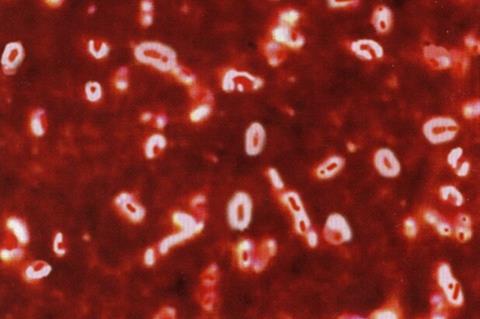Researchers from the University of Southern Denmark (SDU) have discovered a new combination of substances that appears to be able to combat a range of bacteria that causes conditions such as stomach ulcers and urinary tract infections, and that are increasingly developing antibiotic resistance.

Stomach ulcers, bladder infections, kidney stones, bladder stones and stomach cancer are just some of the diseases that the so-called ureolytic bacteria are known to cause. And as if the list of illnesses wasn’t long enough, these bacteria are also very difficult to combat, not least because more and more of them are becoming resistant to antibiotics.
READ MORE: Two ways that members of the microbiome fight salmonella infections
READ MORE: Discharge of untreated hospital effluent is a key driver of multidrug resistance, study finds
However, researchers from the University of Southern Denmark (SDU) may have found a new weapon against ureolytic bacteria.
Harmful enzyme
The potential harm of ureolytic bacteria lies in their production of an enzyme called urease, which breaks down urea into ammonia. The bacteria can then use the ammonia as a nitrogen source for growth. Ammonia is alkaline, so some ureolytic bacteria also use it to raise the local pH level, allowing them to survive in areas with normally low pH, such as the stomach.
As far back as the 1980s, it was discovered that the drug acetohydroxamic acid (AHA) can inhibit this process because AHA is a so-called urease inhibitor. The problem, however, is that AHA can have a number of side effects, including nausea, anemia, depression, anxiety, and hair loss.
However, the researchers in Odense have discovered that by combining AHA with tannic acid, a natural substance from plants, and a low concentration of fluoride, which is also a urease inhibitor, a much more effective combat against the ureolytic bacteria is achieved. This allows for a significant reduction in the amount of AHA used and thereby also lowers the risk of side effects.
The study has been published in the scientific journal Heliyon and is authored by Simon Svane and Henrik Karring from the Faculty of Engineering, and Mie C. Lyngsie and Janne K. Klitgaard from the Faculty of Science.
Reasons for inhibition
”Our research suggests that the reason for the strong inhibition of the urease enzyme and bacterial growth when treated with both AHA and fluoride is that AHA and fluoride can bind and inhibit the urease enzyme simultaneously,” explains Simon Svane, Ph.D. and special consultant at the Department of Green Technology and one of the researchers behind the discovery.
The experiments have only been conducted in the laboratory, so it is still too early to say whether infections can be treated with a combination of AHA, fluoride, and tannic acid in low concentrations.
However, the researchers are optimistic and have also patented the discovery.
”We hope that our future research will show that combination therapy with low concentrations of AHA, fluoride, and tannic acid is an effective treatment for various types of infections caused by ureolytic bacteria,” says Henrik Karring, professor at the Department of Green Technology.







No comments yet